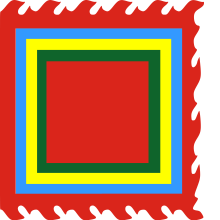Vietnamese calendar
The Vietnamese calendar is a lunisolar calendar that is mostly based on the Chinese calendar. As Vietnam's official calendar has been the Gregorian calendar since 1954,[1] the Vietnamese calendar is used mainly to observe lunisolar holidays and commemorations, such as Tết and Mid-Autumn Festival.
Historical developments
After Vietnam regained independence following the third Chinese domination of Vietnam, monarchs established their own calendars based on Chinese prototypes, and every subsequent dynasty had appointed officers to man and create the calendar to be used in the realm.[1] According to the Đại Việt sử lược historical chronicles, the Vietnamese rulers started building astronomical/astrological facilities in the capital Thăng Long Chinese: 昇龍 (i.e. modern Hanoi) as early as 1029.[2] Beginning in 1324, the Chinese Yuan dynasty introduced the Thụ Thời (Chinese: 授時曆 Shoushi) calendar to the Vietnamese Trần dynasty.[3]
| Calendar name | Year in use | Notes |
|---|---|---|
| Thụ Thời (Chinese: 授時曆 Shoushi) | 1324–1339 | Introduced by the Chinese Yuan dynasty to the Vietnamese Trần dynasty. |
| Hiệp Kỷ | 1339–1401 | Probably a name change with no changes to calculation methods.[3] |
| Thuận Thiên | 1401–1413 | Hiệp Kỷ calendar abolished, with Thuận Thiên replacing it. There was no documentation on the difference between the two.[3] |
| Datong | 1413–1813 | Introduced by the Chinese Ming dynasty in 1369, during the Fourth Chinese domination of Vietnam, the Ming administration in Vietnam used the Datong calendar. At the start of the Vietnamese Lê dynasty in 1428, the end of Chinese domination over Vietnam, there was no evidence that the calendar was changed.[3] |
| Hiệp Kỷ—Shíxiàn | 1813–1840 | Hiệp Kỷ is not to be confused with its earlier namesake. It was essentially the Shíxiàn calendar introduced by the Chinese Qing dynasty to the Vietnamese Nguyễn dynasty.[3] |
| Gregorian | early 19th century | The Gregorian calendar was introduced by the French, and was used in Vietnamese administrative offices at the same time as the Hiệp-kỷ calendar, which remained in use by the Vietnamese royal court.[1] |
| Hiệp Kỷ | 1841–1954 | Beginning in 1841, Hiệp Kỷ began to differ from Shíxiàn due to longitudinal differences between Vietnam and China.[3] |
Beginning in 1954, Vietnamese administrative offices officially used the Gregorian calendar, while the civilian populace continued to use a variety of local calendars derived from French, Chinese and Japanese sources, including the Hiệp Kỷ calendar.[1] On 8 August 1967, the North Vietnamese government issued a decree to change Vietnamese standard time from UTC+8 to UTC+7, as well as make the Gregorian calendar the sole official calendar, restricting lunisolar calendar use to holidays and commemorations. South Vietnam would later join this change at the end of the Vietnam War in 1975.
Difference with Chinese calendar
The Chinese calendar is based on astronomical observations and is therefore dependent on what is considered the local standard time. North Vietnam switched from UTC+8 to UTC+7 on 8 August 1967, with South Vietnam doing likewise in 1975 at the end of the Vietnam War. As a result of the shift, North and South Vietnam celebrated Tết 1968 on different days.[4] This effect would see the solstice falling on 21 December in Hanoi, while it was 22 December for Beijing.
As the 11th month of the Chinese calendar must contain the winter solstice, it is not the month from 23 November 1984 to 21 December 1984 as per the Vietnamese calendar, but rather the one from 22 December 1984 to 20 January 1985. The effect of this is that the Vietnamese New Year would fall on 21 January 1985, whereas the Chinese New Year would fall on 20 February 1985, a one-month difference. The two calendars agreed again after a leap month lasting from 21 March to 19 April of that year was inserted into the Vietnamese calendar.
In the Vietnamese zodiac, the cat replaces the Rabbit in the Chinese zodiac. So, a child born in the Chinese year of the Rabbit will be born in the Vietnamese year of the Cat (mẹo/mão). The Vietnamese zodiac uses the same animals as the Chinese zodiac for the remaining 11 years, though the Ox of the Chinese zodiac is usually considered to be a water buffalo (sửu/trâu) in the Vietnamese zodiac.
See also
References
- Kendall, Laurel (2003). Vietnam: Journeys of Body, Mind, and Spirit. University of California Press. pp. 116–117. ISBN 9780520238725.
- Volkov, Alexei (2013). "Astrology and Hemerology in Traditional Vietnam". Extrême-Orient Extrême-Occident (35): 113–140. Retrieved 11 January 2020.
- Selin, Helaine (2008). Encyclopaedia of the History of Science, Technology, and Medicine in Non-Western Cultures. Springer. pp. 356–359. ISBN 9781402045592.
- Mathematics of the Chinese calendar, pp. 29–30.

